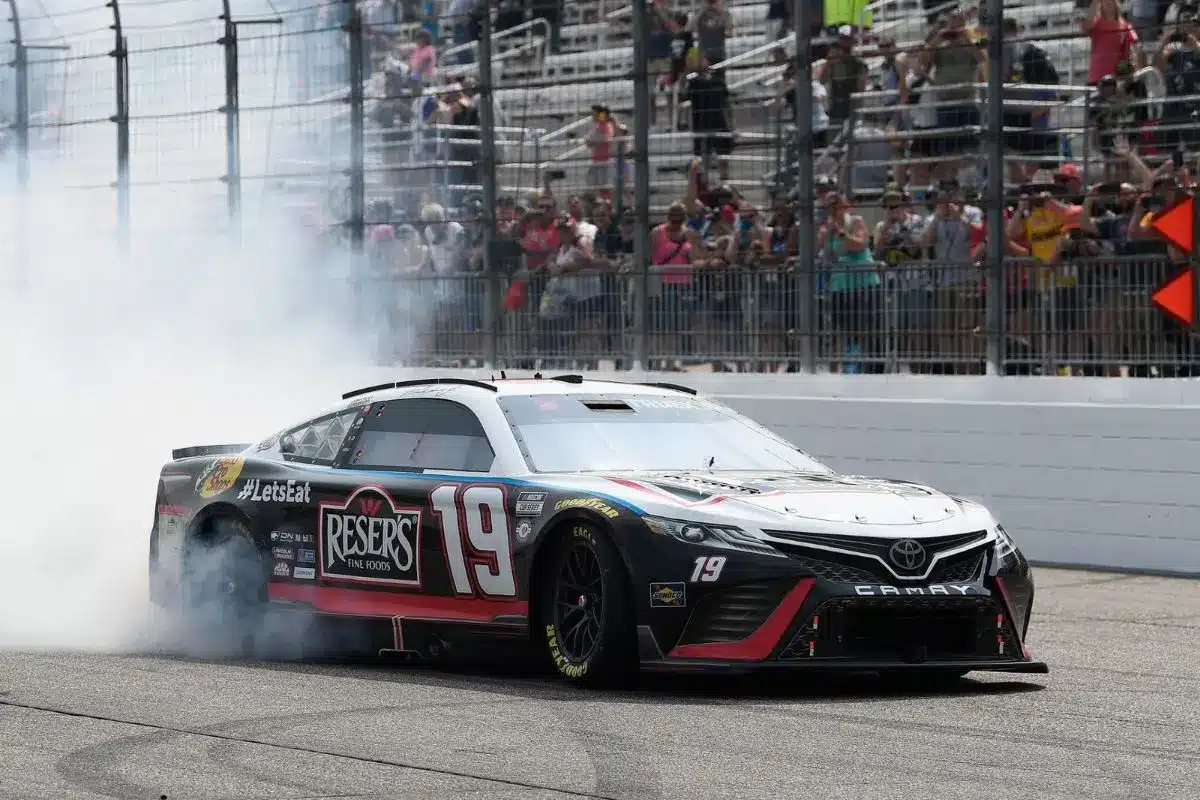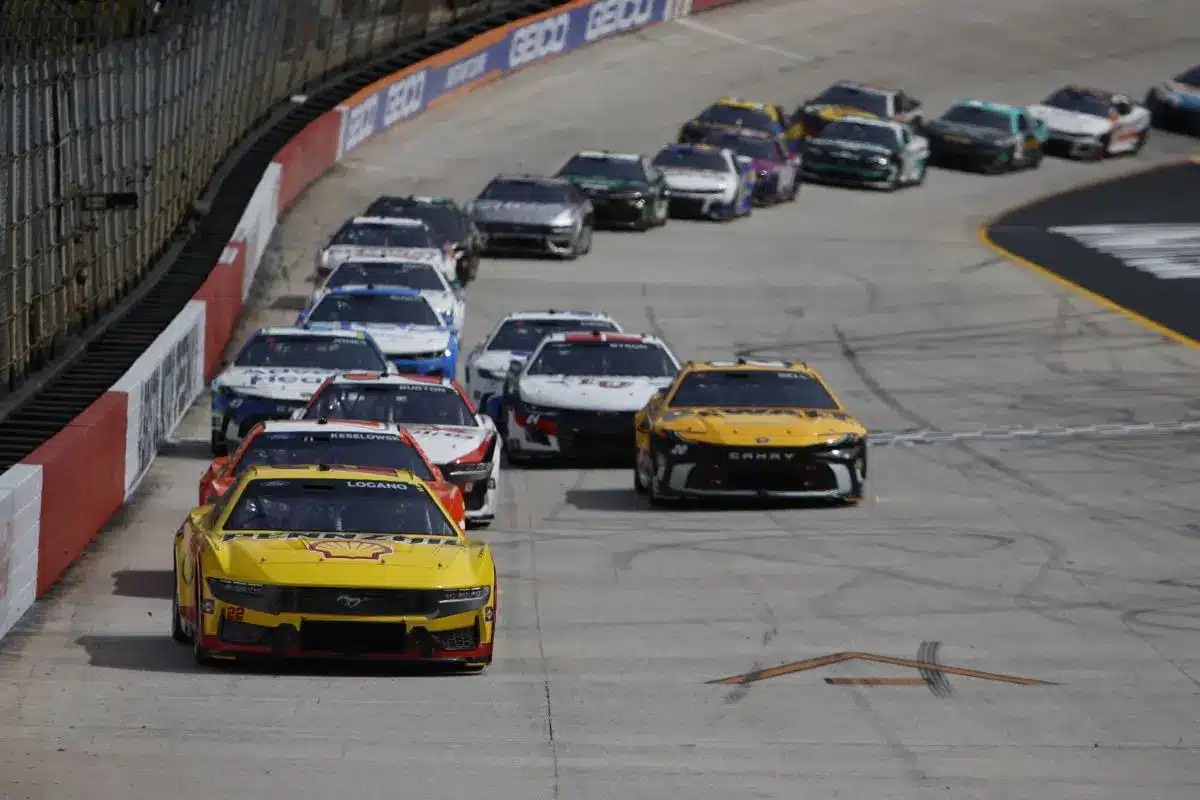NASCAR Drivers Earn More Than Just Salaries: NASCAR drivers at Joe Gibbs Racing receive compensation that transcends their base salaries. Their financial structure incorporates performance incentives and a share of the race purse, which varies based on race outcomes and overall year-end standings. High-profile events, such as the Daytona 500, remarkably enhance earnings, while a distribution model fosters teamwork and motivation among team members.
Key Highlights
- NASCAR drivers earn performance-related incentives in addition to their base salaries, enhancing overall compensation.
- Race purses are divided based on finishing positions, providing financial rewards for competitive performance.
- High-profile races like the Daytona 500 offer significantly higher payouts, boosting drivers’ earnings.
- Employee bonuses at Joe Gibbs Racing promote teamwork and shared success among all contributors.
- The championship purse reflects both individual skill and team strategy, contributing to drivers’ total earnings.
Insights into Joe Gibbs Racing’s Weekly Payouts and Incentives
At the core of Joe Gibbs Racing‘s (JGR) financial structure lies a tactical incentive system that aligns the interests of its drivers and the team. This calculated approach not only improves performance but also fosters a competitive atmosphere where each driver is motivated to achieve their best.
JGR, established in 1992 and owned by the legendary NFL coach Joe Gibbs, has solidified its reputation within the NASCAR landscape, boasting five Cup Series championships and four Xfinity Series titles.
The financial model at JGR is centered around a detailed payout system that incorporates both base salaries and performance-related incentives. As highlighted by President Dave Alpern, drivers receive a share of the race purse, which varies greatly depending on race outcomes. This structure guarantees that drivers are not merely employees; they are stakeholders in the team’s success.
The potential for increased earnings tied to race performance serves as a critical motivator, pushing drivers to excel and contribute to the complete success of the organization.
In an era where competitive advantages can be thin, JGR’s incentive system exemplifies how aligning financial interests can create a robust team dynamic. By integrating performance bonuses into the compensation framework, JGR cultivates an environment where each driver is driven not only by personal ambition but also by the collective goal of elevating the team.
Division of the Payout Among Team Members
The division of the race purse among team members at Joe Gibbs Racing (JGR) is a carefully structured process that reflects the organization’s commitment to equity and motivation. Each week, the allocation of the purse is carefully crafted to guarantee that all contributors to the team’s performance are recognized and rewarded. According to Alpern, a portion of the purse is designated as an employee bonus, fostering a culture of teamwork and shared success. This approach not only incentivizes the collective effort but also reinforces the idea that every role is essential to the team’s achievements.
“Our drivers not only have a base salary, but yes, they get a portion of the purse just like the team does. So a driver has an incentive to win a race. So every week when we get the purse paid out, that purse gets divided. A portion goes to all the employees on an employee bonus. A portion goes to the team and a portion goes to the driver based on their weekly finishing position and their year end finishing position.” – Alpern
Moreover, the purse is divided among the team and the drivers, with allocations varying based on weekly finishing positions and year-end standings. This performance-based structure creates a direct correlation between individual success and financial reward, motivating drivers to excel while also encouraging team cohesion.
View this post on Instagram
Significantly, Alpern highlights that the purse can fluctuate considerably from race to race, with marquee events like the Daytona 500 offering disproportionately high payouts. Such races can profoundly impact the financial landscape of the season, emphasizing the importance of tactical performance in these critical moments.
Additional High-Paying Races and Non-Points Events
High-stakes racing events beyond the traditional points races greatly improve the financial landscape for NASCAR drivers and teams. Among these events, the Daytona 500 stands as the pinnacle, but others, such as the All-Star Race, markedly contribute to drivers’ earnings. The All-Star Race, in particular, offers a staggering $1 million bonus for the winner, emphasizing the lucrative nature of non-points events.
Each of these high-paying races possesses its own unique purse structure, which varies based on factors such as sponsorship, fan engagement, and market demand. This variability creates an environment where drivers can capitalize on their performance in ways that extend beyond the conventional points system. The allure of substantial prizes attracts top talent and increases competition, ultimately raising the sport’s profile and profitability.
“As you would guess, the highest-paying purse of the season is our first race, the Daytona 500. It’s so disproportionately high that where your team finishes in the Daytona 500, can really make or break your season, financially. So that’s a very important race. You also have the non-points races, like the All-Star Race, which pays a $1 million bonus for winning. Also, have the end of the year purse, which is dictated by your finishing position, but you also have the weekly purse, which varies based on the race.” – Alpern
View this post on Instagram
Furthermore, the end-of-year purse, determined by each team’s total performance throughout the season, serves as another financial incentive. This purse, coupled with weekly payouts that fluctuate according to race-specific rewards, highlights the dynamic nature of NASCAR’s earnings landscape. Teams and drivers who consistently excel not only secure points but also reveal considerable financial benefits, reinforcing the value of tactical racing and effective teamwork.
2024 NASCAR Cup Series Championship Purse
Competing in NASCAR involves not only the thrill of racing but also considerable financial implications, particularly concerning the NASCAR Cup Series Championship. The purse for the championship weekend at Phoenix highlights the importance of this event, with a staggering total payout of $11,700,064 designated for the Cup Series alone. This figure encapsulates the different revenue streams that drivers and teams can access, including year-end points fund contributions, contingency awards, and charter payouts based on both current and historical performance.
The financial landscape for NASCAR drivers is multifaceted; while weekly payouts can vary based on individual race results, the championship purse offers a unique opportunity for substantial earnings. For instance, the Cup Series payout dwarfs that of the Xfinity and Truck Series, which stand at $1,772,722 and $822,570, respectively. This disparity highlights the heightened stakes associated with the Cup Series championship.
“Purses for Phoenix championship weekend, including all payouts, all positions, year-end points fund contribution, contingency awards, all charter payouts for competing and historical performance: Cup: $11,700,064, Xfinity: $1,772,722, Truck: $822,570.” – bob pockrass
Purses for Phoenix championship weekend, including all payouts, all positions, year-end points fund contribution, contingency awards, all charter payouts for competing and historical performance:
Cup: $11,700,064
Xfinity: $1,772,722
Truck: $822,570
— Bob Pockrass (@bobpockrass) November 6, 2024
The 2024 Cup Series Championship victory by Joey Logano not only emphasizes his individual skill but also represents a remarkable achievement for Team Penske, marking their third consecutive championship win. Such milestones are crucial, as they not only improve a driver’s reputation but also greatly enhance their financial standing through increased sponsorship opportunities and potential bonuses.
News in Brief: NASCAR Drivers Earn More Than Just Salaries
The financial landscape of NASCAR, particularly through the lens of Joe Gibbs Racing, reveals a multifaceted structure of earnings that transcends basic salaries. Analyzing the distribution of payouts among team members, alongside lucrative opportunities from high-stakes races and non-points events, emphasizes the significance of tactical performance incentives. Additionally, the forthcoming 2024 NASCAR Cup Series Championship purse promises to improve financial rewards, highlighting the competitive nature and economic potential embedded within the sport.
ALSO READ: NASCAR Drivers Reveal Their Ultimate Survival Companions—Find Out Who They’d Choose!


